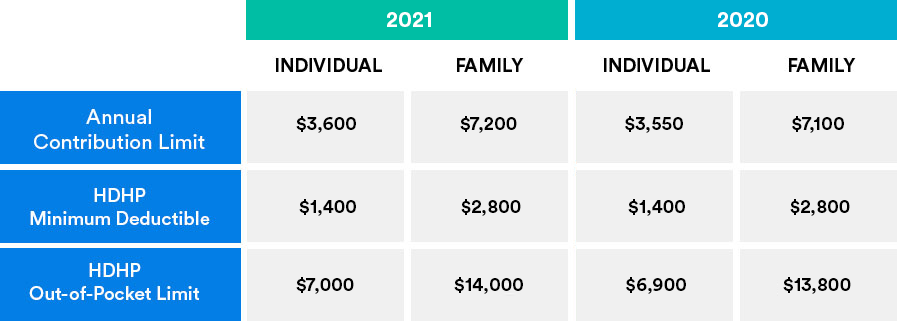What is a health savings account (HSA)?
A Health Savings Account (HSA) is composed of funds contributed by the employee, and sometimes also the employer. In order to contribute funds to an HSA, the account must be integrated with a qualified group High Deductible Health Plan (HDHP). An HDHP, as the name alludes to, has a higher deductible in favor of a lower monthly premium. HSAs can help employees save money in the event they have high out-of-pocket costs for medical treatment, services, or prescriptions.
HSA funds may be used to pay covered medical expenses not reimbursed by the health plan, such as deductibles, copays, and coinsurance amounts, but not premiums. Funds roll over year-to-year if they are not spent. All funds in the HSA belong to the employee at all times, even after termination of employment. Amounts are adjusted annually to take into account inflation and cost-of-living changes.
Contributions to an HSA are tax-deductible for both the employer and employee. Employee contributions to an HSA can be made pretax unless there is no Section 125 Plan or Premium Only Plan in place. Withdrawals to reimburse for qualified medical expenses are tax-free, as is any accumulated interest.
The limits listed below refer to total contribution amounts, whether contributed by employee, employer or a combination of both. Annual contribution limits represent the maximum total dollar amount that may be deposited into the HSA during the plan year, regardless of whether the employee or the employer makes the deposit.
2021 HSA Contribution Limits

What is a health reimbursement account (HRA)?
A Health Reimbursement Account (HRA) is an employer-funded group health plan, from which employees are reimbursed tax-free (up to a fixed dollar amount each year) for qualified medical expenses.
- Employers have more control over the plan; they can design the HRA to cover specific medical expenses.
- An HRA can be integrated with any group health plans, an HDHP is not required.
- An HRA is owned and funded completely by the employer.
- Any funds remaining in the HRA at the end of the plan year may be rolled over to fund the HRA for the next plan year.
HSAs and HRAs cannot be paired or integrated with an individual health plan. The IRS and Department of Labor have issued regulations to prevent any pre-tax employer or employee contribution to individual plan premiums.